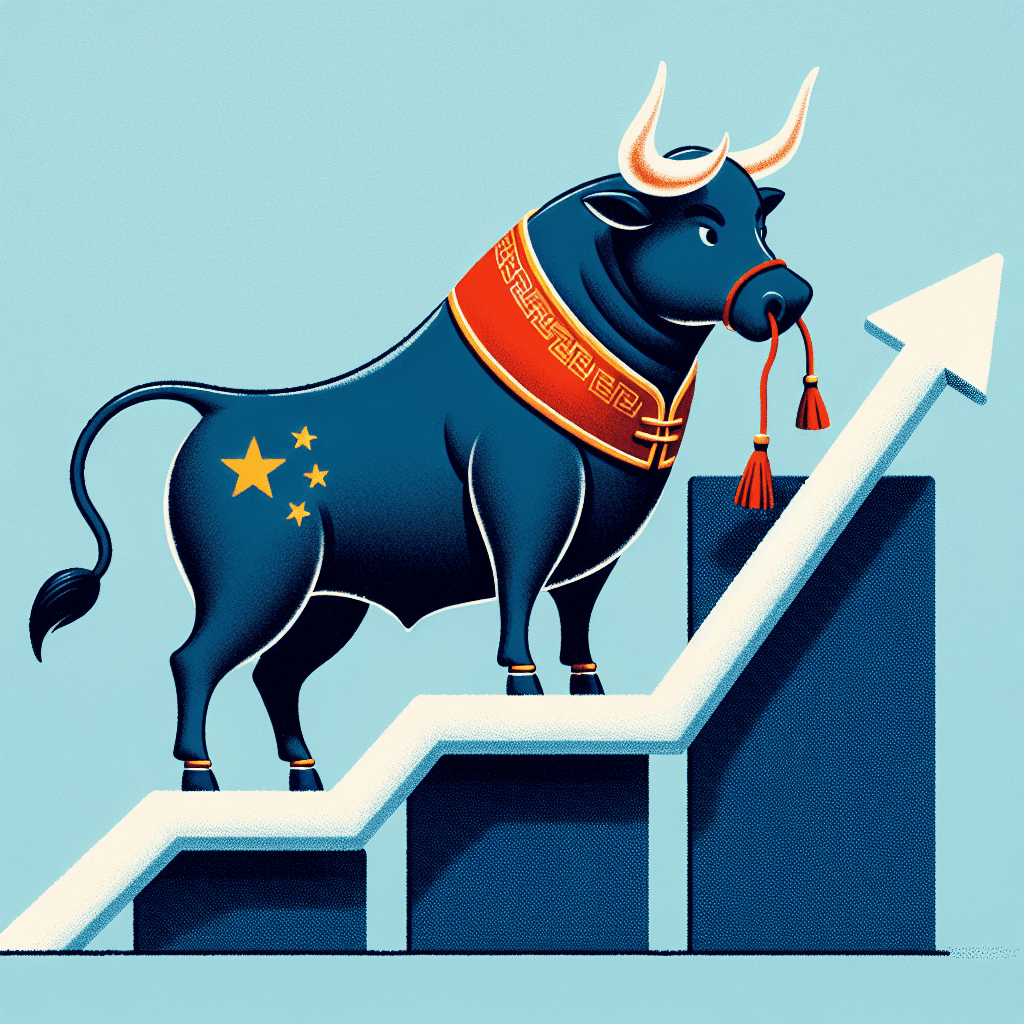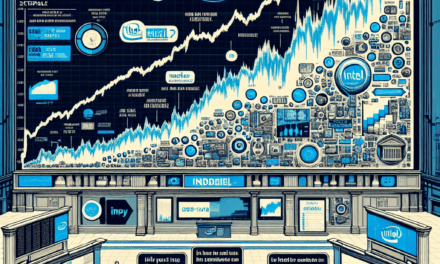“Revving the Engine: China Cuts Rates to Accelerate Economic Momentum”
Introduction
In a strategic move to invigorate its slowing economy, China has announced a reduction in key lending rates, signaling a proactive approach to stimulate growth and enhance financial stability. This decision by the People’s Bank of China marks a significant shift in monetary policy, aimed at lowering borrowing costs for businesses and consumers, thereby encouraging investment and spending. The rate cuts are part of a broader effort to counteract economic challenges, including sluggish domestic demand and external pressures, and to ensure sustainable economic expansion. By easing financial conditions, China seeks to bolster confidence in its economic trajectory and maintain its position as a global economic powerhouse.
Impact Of China’s Lending Rate Cuts On Global Markets
China’s recent decision to reduce key lending rates marks a significant move aimed at invigorating its economic growth, a strategy that holds substantial implications for global markets. As the world’s second-largest economy, China’s financial policies invariably ripple across international borders, influencing economic dynamics far beyond its own shores. The reduction in lending rates is primarily designed to stimulate domestic consumption and investment by making borrowing more affordable for businesses and consumers. This monetary easing is expected to inject liquidity into the economy, thereby fostering an environment conducive to growth. However, the ramifications of such a policy shift extend well beyond China’s borders, affecting global trade, investment flows, and financial markets.
To begin with, China’s rate cuts are likely to have a direct impact on global commodity markets. As borrowing becomes cheaper, Chinese companies may increase their demand for raw materials to ramp up production. This heightened demand could lead to a rise in global commodity prices, benefiting exporting countries that supply these materials. For instance, nations rich in natural resources, such as Australia and Brazil, might experience a boost in their export revenues, thereby positively influencing their economic growth. Conversely, higher commodity prices could pose challenges for countries that are net importers, potentially exacerbating inflationary pressures.
Moreover, the reduction in lending rates could also affect global currency markets. Typically, lower interest rates tend to weaken a country’s currency as investors seek higher returns elsewhere. A depreciated Chinese yuan could make Chinese exports more competitive on the global stage, potentially widening the trade surplus with its trading partners. This scenario might prompt other countries to reassess their monetary policies to maintain trade balance and competitiveness, potentially leading to a series of rate adjustments worldwide.
In addition to these direct effects, China’s monetary policy shift could influence global investment patterns. Lower borrowing costs in China might encourage domestic firms to expand their operations, both locally and internationally. This expansion could lead to increased foreign direct investment (FDI) from Chinese companies into other countries, particularly in sectors such as technology, infrastructure, and manufacturing. Such investments could provide a much-needed boost to economies struggling with sluggish growth, thereby fostering a more interconnected global economic landscape.
Furthermore, the impact of China’s rate cuts on global financial markets cannot be overlooked. Investors worldwide closely monitor China’s economic policies, given the country’s significant role in the global economy. A move to lower lending rates might be perceived as a signal of potential economic challenges within China, prompting investors to reassess their risk exposure. This reassessment could lead to increased volatility in global stock markets as investors adjust their portfolios in response to changing economic conditions.
In conclusion, China’s decision to reduce key lending rates is a strategic move aimed at bolstering its economic growth, with far-reaching implications for global markets. From influencing commodity prices and currency valuations to shaping investment flows and financial market dynamics, the effects of this policy shift are multifaceted and complex. As the world continues to navigate an increasingly interconnected economic landscape, the actions of major economies like China will undoubtedly play a pivotal role in shaping global economic trends. Consequently, policymakers and investors alike must remain vigilant, adapting to the evolving economic environment to mitigate risks and capitalize on emerging opportunities.
How Reduced Lending Rates Could Stimulate China’s Domestic Economy
China’s recent decision to reduce key lending rates marks a significant move aimed at invigorating its domestic economy. This strategic adjustment comes in response to a series of economic challenges, including slowing growth and external pressures. By lowering these rates, the Chinese government seeks to stimulate borrowing and investment, thereby fostering economic activity and enhancing consumer confidence. The implications of this policy shift are multifaceted, affecting various sectors and potentially setting the stage for a more robust economic landscape.
To understand the potential impact of reduced lending rates, it is essential to consider the mechanisms through which they operate. Lower lending rates decrease the cost of borrowing for businesses and consumers alike. For businesses, this reduction translates into cheaper loans, which can be used to finance expansion projects, invest in new technologies, or increase production capacities. As companies grow and innovate, they create more jobs, thereby reducing unemployment and increasing disposable income for households. This, in turn, can lead to higher consumer spending, which is a critical driver of economic growth.
Moreover, reduced lending rates can also alleviate financial burdens on existing debt. For individuals and businesses with outstanding loans, lower interest rates mean reduced monthly payments, freeing up capital for other expenditures. This increased liquidity can stimulate demand for goods and services, further propelling economic activity. Additionally, as borrowing becomes more attractive, consumer confidence is likely to rise, encouraging spending rather than saving. This shift in behavior can have a ripple effect across the economy, boosting sectors such as retail, real estate, and manufacturing.
Furthermore, the real estate market, a significant component of China’s economy, stands to benefit considerably from lower lending rates. With more affordable mortgage options, potential homebuyers may be incentivized to enter the market, driving up demand for housing. This increased demand can lead to a rise in property values, benefiting homeowners and developers alike. As the real estate sector thrives, it can stimulate related industries, such as construction and home furnishings, creating a positive feedback loop that supports broader economic growth.
In addition to domestic considerations, reduced lending rates can also enhance China’s competitiveness on the global stage. By fostering a more dynamic and resilient economy, China can better navigate international trade tensions and economic uncertainties. A robust domestic market can serve as a buffer against external shocks, providing stability and confidence to both domestic and foreign investors. This stability is crucial for maintaining China’s position as a key player in the global economy.
However, it is important to acknowledge potential risks associated with reduced lending rates. While they can stimulate growth, excessively low rates may lead to overheating in certain sectors or contribute to asset bubbles. Therefore, it is imperative for policymakers to monitor economic indicators closely and adjust rates as necessary to maintain a balanced and sustainable growth trajectory.
In conclusion, China’s decision to lower key lending rates represents a proactive approach to addressing economic challenges and stimulating growth. By making borrowing more accessible, the government aims to boost investment, consumer spending, and overall economic activity. While the benefits of this policy are promising, careful management and oversight will be essential to ensure that the economy remains on a stable and sustainable path. As China navigates this complex economic landscape, the effects of reduced lending rates will be closely watched by both domestic and international stakeholders.
The Role Of Monetary Policy In China’s Economic Strategy
In recent years, China’s economic strategy has increasingly relied on the nuanced application of monetary policy to navigate the complexities of both domestic and global economic landscapes. A pivotal move in this strategy has been the reduction of key lending rates, a decision aimed at invigorating economic growth amid various challenges. This approach underscores the critical role that monetary policy plays in shaping the trajectory of China’s economic development.
The decision to lower key lending rates is not made in isolation but is part of a broader strategy to stimulate economic activity. By reducing these rates, the People’s Bank of China (PBOC) aims to lower the cost of borrowing for businesses and consumers alike. This, in turn, is expected to encourage investment and consumption, two vital components of economic growth. As businesses find it cheaper to finance expansion projects and consumers face lower interest rates on loans, the overall demand within the economy is likely to increase, thereby fostering a more robust economic environment.
Moreover, the reduction in lending rates is a response to both internal and external economic pressures. Domestically, China has been grappling with a slowdown in economic growth, partly due to structural adjustments and the transition towards a more consumption-driven economy. Externally, global economic uncertainties, including trade tensions and fluctuating demand for exports, have necessitated a more flexible monetary policy. By adjusting lending rates, China seeks to mitigate these pressures and maintain a stable growth trajectory.
In addition to stimulating demand, lower lending rates can also have a positive impact on the financial markets. As borrowing costs decrease, there is often an increase in liquidity within the financial system. This can lead to a more favorable environment for investment in equities and other financial instruments, potentially boosting market confidence. Furthermore, a well-timed rate cut can help stabilize the currency by making domestic investments more attractive, thereby supporting the yuan’s value in the international market.
However, it is important to recognize that while reducing lending rates can provide a short-term boost to the economy, it is not without potential risks. One concern is the possibility of increased financial leverage, as lower borrowing costs may encourage excessive borrowing by businesses and consumers. This could lead to asset bubbles or financial instability if not carefully managed. Therefore, the PBOC must balance the need for economic stimulation with the imperative of maintaining financial stability.
In this context, the role of monetary policy extends beyond mere rate adjustments. It involves a comprehensive approach that includes regulatory measures to ensure that credit flows to productive sectors of the economy. Additionally, the PBOC must remain vigilant in monitoring economic indicators and be prepared to adjust its policy stance as necessary to address emerging challenges.
In conclusion, the reduction of key lending rates is a testament to the strategic role of monetary policy in China’s economic framework. By carefully calibrating these rates, China aims to bolster economic growth while navigating a complex array of domestic and international challenges. As the global economic landscape continues to evolve, the effectiveness of this approach will depend on the PBOC’s ability to adapt its policies to changing conditions, ensuring that monetary policy remains a cornerstone of China’s economic strategy.
Comparing China’s Rate Cuts With Other Global Economic Measures

In recent months, China has taken decisive steps to invigorate its economy by reducing key lending rates, a move that has garnered significant attention on the global stage. This strategic decision aims to stimulate economic growth by making borrowing more affordable for businesses and consumers, thereby encouraging investment and spending. As the world’s second-largest economy, China’s monetary policy adjustments are closely watched, not only for their domestic implications but also for their potential ripple effects across global markets. To better understand the significance of China’s rate cuts, it is essential to compare them with economic measures adopted by other major economies.
China’s decision to lower its key lending rates comes at a time when many countries are grappling with economic challenges, albeit with varying strategies. For instance, the United States, facing inflationary pressures, has opted for a contrasting approach by raising interest rates. The Federal Reserve’s rate hikes are intended to curb inflation by cooling down an overheated economy, a tactic that stands in stark contrast to China’s growth-oriented rate cuts. This divergence in monetary policy highlights the differing economic conditions and priorities between the two nations. While the U.S. focuses on stabilizing prices, China is more concerned with sustaining growth amid a slowing economy.
Similarly, the European Central Bank (ECB) has also been navigating a complex economic landscape. Like the U.S., the Eurozone has been dealing with inflationary concerns, prompting the ECB to gradually increase interest rates. However, the ECB’s approach has been more cautious, reflecting the diverse economic conditions across member states. In contrast, China’s rate cuts are a more direct and aggressive measure to counteract slowing growth, underscoring the urgency of its economic situation.
In Asia, Japan presents another interesting case. The Bank of Japan has maintained its ultra-loose monetary policy, keeping interest rates at historically low levels to combat deflation and stimulate growth. While Japan’s approach shares similarities with China’s in terms of promoting economic activity, the underlying economic contexts differ. Japan’s long-standing battle with deflation contrasts with China’s current focus on reigniting growth momentum.
Furthermore, emerging markets have also been responding to global economic challenges with varied strategies. Countries like India and Brazil have faced inflationary pressures, leading to interest rate hikes to stabilize their economies. These measures, while necessary to control inflation, can also slow down economic growth, presenting a delicate balancing act for policymakers.
China’s rate cuts, therefore, stand out as a bold move to prioritize growth over inflation concerns. This decision reflects the Chinese government’s commitment to achieving its economic targets, even as it navigates complex domestic and international challenges. By reducing lending rates, China aims to support its real estate sector, boost consumer confidence, and enhance the competitiveness of its industries.
In conclusion, China’s reduction of key lending rates is a significant economic measure that contrasts with the monetary policies of other major economies. While the U.S. and Europe focus on combating inflation through rate hikes, China is prioritizing growth through rate cuts. This divergence underscores the varied economic conditions and policy priorities across the globe. As China continues to implement its growth-oriented strategy, the global economic community will be closely monitoring the outcomes and potential implications for international markets.
Potential Long-term Effects Of China’s Lending Rate Reductions
China’s recent decision to reduce key lending rates marks a significant move aimed at stimulating economic growth amid a backdrop of global economic uncertainty. This strategic adjustment in monetary policy is designed to lower borrowing costs, thereby encouraging businesses and consumers to increase spending and investment. While the immediate effects of such a policy shift are often visible in the form of increased liquidity and economic activity, the potential long-term effects warrant a closer examination.
To begin with, reducing lending rates can lead to a more dynamic business environment. By making capital more accessible, businesses, particularly small and medium-sized enterprises, may find it easier to finance expansion projects, invest in new technologies, and hire additional staff. This can lead to increased productivity and innovation, which are crucial for sustaining economic growth over the long term. Moreover, as businesses expand and innovate, they contribute to job creation, which in turn can boost consumer confidence and spending.
However, while the immediate benefits are apparent, the long-term implications of reduced lending rates are more complex. One potential concern is the risk of inflation. As borrowing becomes cheaper, the increased demand for goods and services can lead to upward pressure on prices. If not carefully managed, this inflationary trend could erode purchasing power and negate some of the benefits of economic growth. Therefore, it is essential for policymakers to strike a balance between stimulating growth and maintaining price stability.
In addition to inflationary pressures, there is also the risk of increased financial instability. Lower lending rates can encourage excessive borrowing, leading to higher levels of debt among businesses and consumers. If economic conditions change or if interest rates rise in the future, these debt levels could become unsustainable, potentially leading to defaults and financial crises. Thus, while reduced lending rates can provide a short-term boost, they must be accompanied by prudent financial regulation to mitigate the risks of excessive leverage.
Furthermore, the impact of China’s lending rate reductions extends beyond its borders, influencing global economic dynamics. As one of the world’s largest economies, China’s monetary policy decisions can affect international trade and investment flows. Lower lending rates may lead to a depreciation of the Chinese yuan, making Chinese exports more competitive on the global market. While this can benefit China’s export-driven economy, it may also lead to trade tensions with other countries that perceive this as an unfair advantage.
Moreover, the global financial markets are likely to respond to China’s rate cuts. Investors seeking higher returns may shift their capital to other markets, potentially leading to volatility in global asset prices. This interconnectedness underscores the importance of coordinated international economic policies to ensure stability and growth.
In conclusion, while China’s reduction of key lending rates is a strategic move to bolster economic growth, it is accompanied by a range of potential long-term effects. These include the risk of inflation, financial instability, and shifts in global economic dynamics. Policymakers must navigate these challenges carefully, balancing the need for immediate economic stimulus with the imperative of maintaining long-term stability. As the world watches China’s economic trajectory, the outcomes of these policy decisions will undoubtedly have far-reaching implications for both domestic and global economies.
Sectoral Benefits Of Lower Lending Rates In China
China’s recent decision to reduce key lending rates marks a significant move aimed at invigorating its economic growth. This strategic adjustment is expected to have a profound impact across various sectors, each poised to benefit in distinct ways. By lowering the cost of borrowing, the Chinese government seeks to stimulate investment, consumption, and overall economic activity, thereby addressing the challenges posed by a slowing economy.
One of the primary beneficiaries of reduced lending rates is the real estate sector. In recent years, China’s property market has faced a series of challenges, including regulatory tightening and declining demand. Lower lending rates can alleviate some of these pressures by making mortgages more affordable for homebuyers. As a result, this could lead to an increase in property transactions, providing a much-needed boost to the sector. Furthermore, real estate developers may find it easier to finance new projects, potentially leading to a resurgence in construction activity and job creation.
In addition to real estate, the manufacturing sector stands to gain significantly from reduced borrowing costs. As a cornerstone of China’s economy, manufacturing has been grappling with rising production costs and global trade uncertainties. Lower lending rates can help manufacturers access cheaper credit, enabling them to invest in new technologies and expand their operations. This, in turn, can enhance productivity and competitiveness, positioning Chinese manufacturers more favorably in the global market. Moreover, increased investment in manufacturing can lead to higher demand for raw materials, benefiting upstream industries such as mining and metallurgy.
The financial sector is another area likely to experience positive effects from the reduction in lending rates. Banks and financial institutions may see an uptick in loan demand as businesses and consumers take advantage of more favorable borrowing conditions. This can lead to increased lending activity, boosting the profitability of financial institutions. Additionally, lower interest rates can encourage businesses to refinance existing debt, improving their financial health and reducing the risk of defaults. Consequently, a more robust financial sector can contribute to overall economic stability and growth.
Transitioning to the consumer sector, lower lending rates can stimulate consumer spending by reducing the cost of credit for households. With cheaper access to loans, consumers may be more inclined to make significant purchases, such as automobiles and household appliances. This increase in consumer spending can drive demand for goods and services, benefiting retailers and service providers alike. Furthermore, as consumer confidence improves, it can create a positive feedback loop, encouraging further spending and economic activity.
While the benefits of reduced lending rates are evident across these sectors, it is essential to consider potential challenges. For instance, there is a risk that prolonged low interest rates could lead to excessive borrowing and asset bubbles. Therefore, it is crucial for policymakers to strike a balance between stimulating growth and maintaining financial stability. Additionally, the effectiveness of lower lending rates in boosting economic growth may depend on other factors, such as global economic conditions and domestic policy measures.
In conclusion, China’s decision to reduce key lending rates is a strategic move aimed at revitalizing its economy. By lowering borrowing costs, the government seeks to stimulate investment and consumption across various sectors, including real estate, manufacturing, finance, and consumer goods. While the potential benefits are substantial, careful monitoring and complementary policy measures will be essential to ensure sustainable economic growth and stability. As China navigates these economic challenges, the impact of reduced lending rates will be closely watched by both domestic and international stakeholders.
Challenges And Opportunities Arising From China’s Economic Stimulus
China’s recent decision to reduce key lending rates marks a significant move in its ongoing efforts to stimulate economic growth. This policy shift comes at a time when the world’s second-largest economy faces a complex array of challenges, both domestically and internationally. By lowering these rates, China aims to encourage borrowing and investment, thereby invigorating economic activity. However, this strategy is not without its challenges and opportunities, each of which could have profound implications for the country’s economic trajectory.
One of the primary challenges associated with reducing lending rates is the potential for increased financial risk. Lower interest rates can lead to excessive borrowing, which may inflate asset bubbles, particularly in the real estate sector. China’s property market has long been a critical component of its economic engine, but it also poses significant risks if not carefully managed. The government must balance the need to stimulate growth with the imperative to maintain financial stability. This requires vigilant monitoring of credit flows and the implementation of macroprudential measures to prevent overheating in key sectors.
Moreover, the reduction in lending rates may not be sufficient to address deeper structural issues within the Chinese economy. For instance, the country is grappling with an aging population, which could dampen long-term growth prospects. Additionally, China’s transition from an investment-driven growth model to one that is more consumption-oriented presents its own set of challenges. While lower interest rates can provide a short-term boost, they do not necessarily resolve these underlying structural problems. Therefore, complementary reforms in areas such as labor markets, social security, and innovation are essential to ensure sustainable growth.
On the international front, China’s rate cuts could have ripple effects across global markets. As China is a major player in international trade, its economic policies can influence global demand and supply chains. A more robust Chinese economy could lead to increased demand for commodities and goods from other countries, potentially benefiting global trade partners. However, there is also the risk of capital outflows as investors seek higher returns elsewhere, which could impact currency stability and financial markets.
Despite these challenges, the reduction in lending rates presents several opportunities for China. By making borrowing more affordable, the policy could spur investment in key sectors such as technology and infrastructure. This is particularly important as China seeks to enhance its competitiveness in high-tech industries and reduce its reliance on foreign technology. Furthermore, lower rates could support small and medium-sized enterprises (SMEs), which are vital for job creation and economic diversification. By facilitating access to credit, the government can empower these businesses to innovate and expand, thereby contributing to a more dynamic and resilient economy.
In conclusion, China’s decision to reduce key lending rates is a strategic move aimed at bolstering economic growth amid a challenging environment. While this policy offers opportunities to stimulate investment and support critical sectors, it also necessitates careful management to mitigate financial risks and address structural issues. As China navigates this complex landscape, the interplay between domestic reforms and international dynamics will be crucial in shaping its economic future. The success of this stimulus measure will depend on the government’s ability to balance short-term growth objectives with long-term sustainability goals, ensuring that the benefits of economic expansion are both robust and enduring.
Q&A
1. **What are key lending rates?**
Key lending rates are interest rates set by a central bank that influence the cost of borrowing money. They are used as a tool to control economic growth and inflation.
2. **Why did China reduce its key lending rates?**
China reduced its key lending rates to stimulate economic growth by making borrowing cheaper for businesses and consumers, encouraging investment and spending.
3. **Which specific rates were reduced by China?**
China typically adjusts the one-year and five-year Loan Prime Rates (LPR), which are benchmarks for lending to businesses and households.
4. **How does reducing lending rates impact the economy?**
Lower lending rates decrease the cost of borrowing, which can lead to increased investment and consumer spending, thereby boosting economic activity.
5. **What are potential risks of reducing key lending rates?**
Potential risks include increased inflation, asset bubbles, and excessive borrowing, which could lead to financial instability.
6. **How do reduced lending rates affect the currency value?**
Reduced lending rates can lead to a depreciation of the currency as lower interest rates may decrease foreign investment inflows.
7. **What sectors are most likely to benefit from reduced lending rates in China?**
Sectors such as real estate, manufacturing, and consumer goods are likely to benefit as they often rely on borrowing for expansion and operations.
Conclusion
China’s decision to reduce key lending rates is a strategic move aimed at stimulating economic growth amid slowing momentum and external challenges. By lowering these rates, the Chinese government seeks to encourage borrowing and investment, thereby boosting domestic consumption and business expansion. This monetary policy adjustment reflects the government’s proactive approach to counteract economic headwinds, such as trade tensions and global economic uncertainties. However, while the rate cuts may provide short-term relief and support for the economy, they also highlight underlying structural issues that need addressing to ensure sustainable long-term growth. The effectiveness of this measure will depend on its ability to spur demand without exacerbating financial imbalances or leading to excessive debt accumulation.





